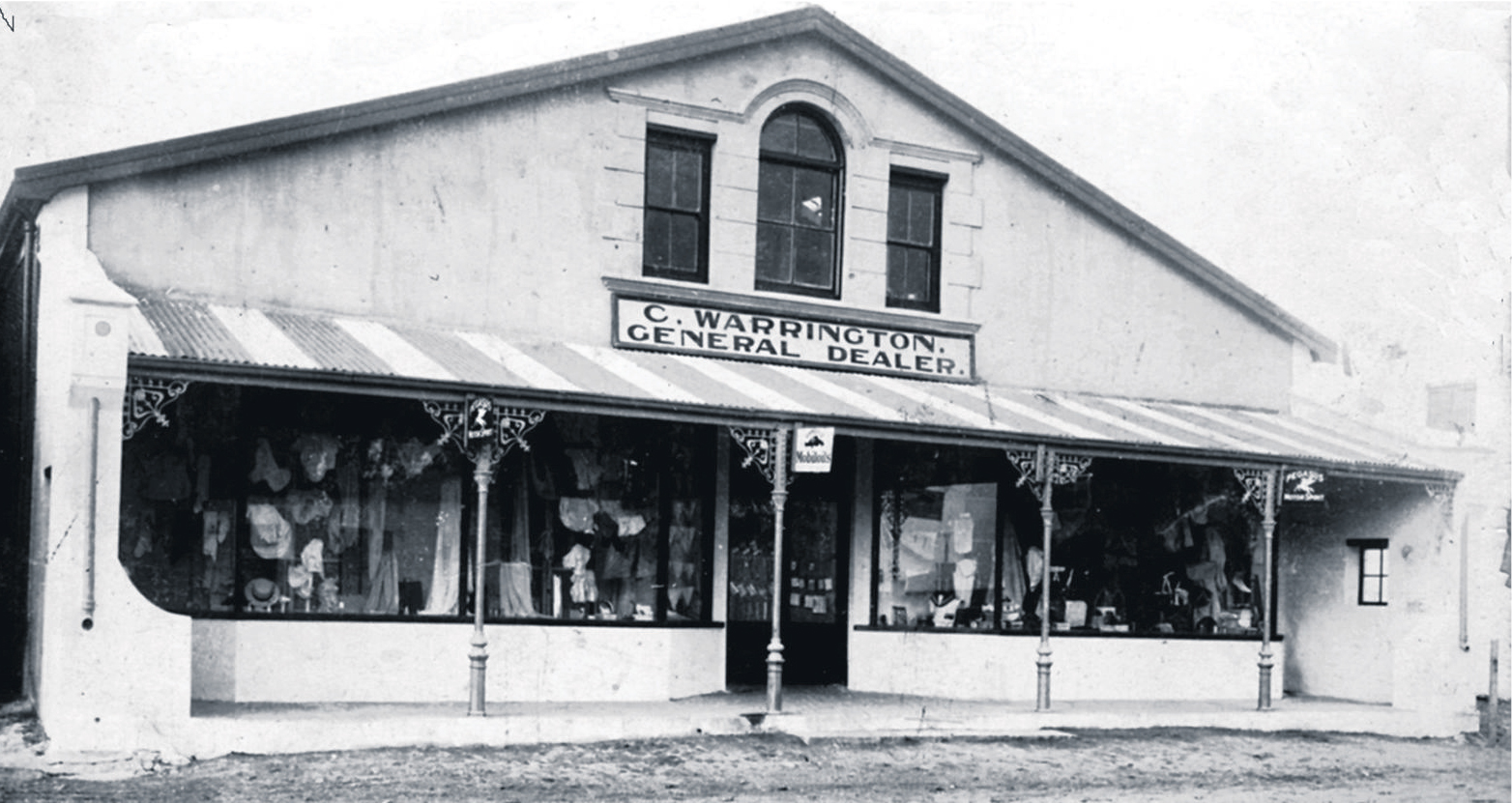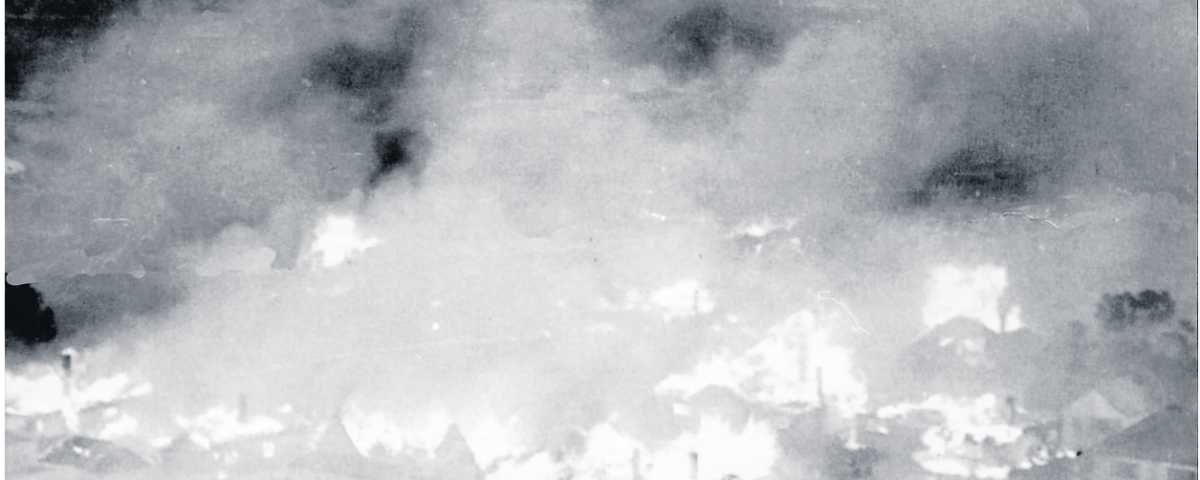
RE-THINKING HERMANUS HISTORY: ECONOMIC GROWTH IN A UNIQUE SOUTH AFRICAN TOWN PRESENTED BY ROBIN LEE
October 2, 2018
A distinctive place, pavement life essential
October 3, 2018Part 3 of 3: The Great Fires of Hermanus
In trying to identify as many fires as possible I have consulted all written histories of Hermanus, all written memoirs and scanned issues of the Hermanus Times, which has had different names over time.
I have arranged the data in chronological order.
The first recorded fire occurred in 1936, when a substantial holiday home known as “Roman Rock” was destroyed. The house was situated in Protea Road, in what is now Eastcliff. At the time it was owned by Charles and “Lil” Theron, the founders of the firm Guthrie and Theron, which continues to function today. The Therons did not attempt to rebuild, but moved to a second house in Voëlklip. They sold the charred ruins to a Mr Arnold S Milne, who had the house rebuilt by 1941. It has been only slightly altered over the years and has been owned by the same family since 1968. Milne’s plans are still available, so it is possible to imagine the burnt older house beneath the existing structure.
The 1940s were notable for three devastating fires in hotels. In July 1940 the quite new Bay View Hotel in Main Road, Eastcliff was almost totally destroyed by fire. Hermanus did not yet boast a local newspaper and the only account of this fire is given in “Luyt’s Marine: A Diary of the Years 1942 to 1947” by Berdine Luyt:
The Bay View burnt down at the end of July 1940. It was during the afternoon. I had climbed the kopje [Hoy’s Koppie] with a friend, Garth Mackintosh, who was staying at the Bay View, and we were sitting on the top looking at the view and idly talking, when we saw a column of smoke coming from the direction of the hotel. We speculated on what it could be, and I said: “Oh, they’re only burning rubbish in the garden. “Wouldn’t it be funny if it was the Bay View on fire and all my belongings burning as we sit here watching?” Garth said jokingly, and I laughed. Just then great leaping tongues of flame shot out from the hotel roof. “Good God, it is on fire!” Garth cried. We were down that kopje, running, sliding and jumping, in about two minutes, and we ran all the way to the Bay View. We arrived, panting to find Mother (Mrs Joey Luyt) already helping Mr Basil Musson (owner and manager of the hotel) organise what rescue work was possible. The building was old and burnt like tinder, with a fierce blaze. Cars and people arrived from all over the countryside – it caused an immense sensation and it was very exciting. But not such fun for Mr and Mrs Musson. It’s a sorrowful thing to stand helplessly by and watch all you have and everything you have worked for go up in smoke — even if you are insured. The Mussons now have a new modern hotel instead, on the site of the old one.
There were two hotel fires in 1944: in February the Cliff Lodge Hotel and in November the Riviera Hotel. Both were witnessed by Berdine Luyt and described. About the first fire she writes:
Cliff Lodge, the hotel at Westcliff with the picturesque Tudorish appearance was due to be sold at the end of this month by public auction. Yesterday a fire broke out in the roof, and it now makes a very picturesque ruin…The fire started with a short in the electrical wiring in the roof, which was of thatch, so it caught rapidly…
The hotel was full and the Luyts at the Marine Hotel offered to accommodate as many guests as they could. This gave Berdine the opportunity to describe some of them:
One couple arrived with their belongings tied up in sheets. The lady, who was large and foreign, suddenly discovered on her way into the dining room that she had forgotten her false teeth. She gave me a hysterical account of going to lie down and putting her teeth in a glass of water in the bathroom. She insisted I send a steward to look for them in the ruins, but I pointed out, as gently as possible, that the ruins were still red hot and no one could look through them for anything. The visitors in the Cliff Lodge ground floor rooms were able to save almost all their belongings. Those upstairs were less fortunate. One honeymoon couple had gone to Voëlklip beach in their bathing costumes and wraps just after breakfast. They returned at lunchtime to find their hotel in flames and all their belongings destroyed. Her entire trousseau was burnt, all his uniforms (he was in the RAF), and all their wedding presents.
The Riviera Hotel also joined the casualty list. Again, Berdine Luyt was on the spot to witness events. She rushed to the site as soon as the news was received:
We arrived to find the hotel completely gutted. Mr Ball (the Manager) was standing on the lawn, looking very miserable in the early morning light, dressed in pyjamas, a thick coat and a woman’s sun-hat, his hair singed from the flames. He said he had gone to bed after locking up at twenty to two, and five minutes later someone called to him and said there was a fire at the back of the hotel. He isn’t sure what caused it, but suspects the boiler, which gave trouble and would emit sparks when over-stoked. The hotel burnt down in two hours. Hardly anything was salvaged, and the visitors staying there lost most of their things as well. Fortunately there were very few guests, and they had all been fixed up in houses nearby…
As the number of hotels increased in the 1950s, so did the number of hotel fires. In 1953, the Nielsen’s/Central Hotel was destroyed, along with the Astoria Hotel, built on the site of the very first Hermanus hotel, the Victoria.
In 1956, the Seahurst Hotel was burned down. There was then a long period of no hotel fires, but in 1968 the newest hotel in town, the Birkenhead Hotel in Voëlklip, suffered major but not terminal damage.
This hotel was built in the early 1950s by the Luyt family. The fire occurred on 11 December and the hotel was fully booked for Christmas. The Hermanus News described the fire, commenting on the fact that sightseers once again hindered the fire brigade substantially. The report also states: “A lot of damage was done by over-eager helpers throwing furniture out of the windows, tearing down pelmets and ripping up carpets.” This was the last hotel fire until the Royal Hotel burned down in 1980, taking the Adelphi Cinema with it.
A search through the archives of the Hermanus News/Times shows nine reports of fires involving residential property during the period 1957 and 1962. In March 1957 a house was destroyed in Kwaaiwater and two others damaged. The fire had started in the trees at Mossel River.
In December 1957, the thatched roof of a Westcliff house caught alight from embers from a braai, and the house was destroyed. Sparks from the first fire set six other houses alight, and they were also destroyed.
In January 1958 a single house in Mossel River was burned down and in August a house in Eastcliff was also destroyed. In 1961, one fire is recorded: in March a fire started next to the Mossel River, in what is now Fernkloof, and destroyed an unknown number of houses in Contour Street, Theron Street and, leaping Main Road, in Kwaaiwater. Estimated damage was R15 million.
Any hopes that the threat of fire had been removed were dashed when, on 19 February 1962 the town suffered a fire almost equal to the “great fire” of 1958. Starting near the golf course and moving westward, it was temporarily hindered by the course, but the strong north-west wind blew embers across Main Road and houses in Eastcliff, and Kwaaiwater began to burn. Twenty-two houses were destroyed and eight seriously damaged, including a house belonging to politician Sir de Villiers Graaff (unoccupied at the time).
Although there were no deaths or casualties involved, the State President, Mr C R Swart, sent a message of condolence. He later visited the sites as he had a holiday home in Hermanus. Arderne Tredgold describes this fire in some detail:
An elderly woman who refused to move from her fire-encircled house, because it had an iron roof, was taken out forcibly by the police. Furniture was dragged out of another house, which seemed in danger and piled on the lawn. The house did not catch fire, but sparks set the furniture alight. Perhaps because of the strength of the wind the fire sometimes leapfrogged over properties.
The heat of this fire was so intense that wooden furniture from houses not yet alight spontaneously burst into flame in the street. Following this fire, the Town Council voted more money to firefighting services and bought more modern equipment. It also asked for suggestion from the community. The turning point was when, in 1963, the “Council ruled that no more thatch or other inflammable material might be used for roofs, and property owners could be compelled to keep their land clear of dangerous bush and trees.” (Tredgold)
Although there have not been recent fires to compare with those of the 1950s and 1960s, the danger remains very real. Housing developments have pushed into fynbos territory and are very vulnerable to fire. But iron and tiled roofing eliminates the runaway fires of the past.

